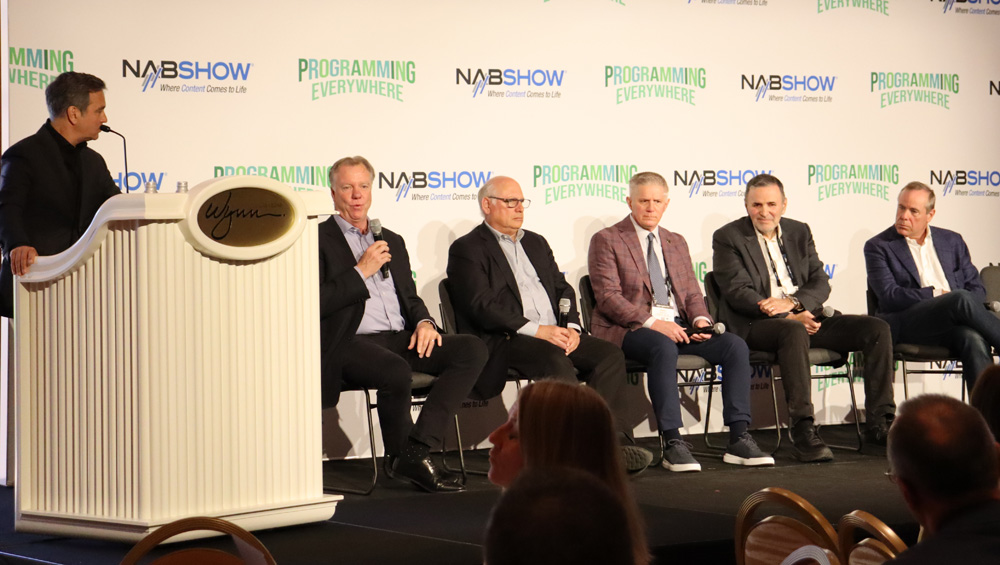
Broadcasters, Leagues And Teams Eye Hybrid Models While Rethinking Regional Sports

LAS VEGAS — Broadcasters are rethinking their relationships with live sports due to the recent dramatic downturn in the regional sports network business.
Earlier this year, Sinclair-owned Diamond Sports missed a $140 million debt payment before declaring Chapter 11 bankruptcy, and it missed payments to three Major League Baseball teams: the Arizona Diamondbacks, the Cleveland Guardians and the Minnesota Twins. Warner Bros. Discovery declared that it was exiting the business and shutting down its four AT&T Sports Networks. And NBCUniversal sold its remaining 67% stake in one of its four regional sports networks, NBC Sports Washington, to Monumental Sports & Entertainment.
What seems like the sudden demise of a long-running business is due to the rapid change in how media is distributed and consumed. Regional sports networks (RSNs) snatched up sports programming rights, paying large license fees to leagues and teams, and then made money via cable and satellite TV carriage. But that model did not foresee how quickly cord-cutting would overtake the pay TV model.
“We’re at a moment in time where the model doesn’t work for teams and leagues anymore,” said Brian Lawlor, president, Scripps Sports at The E.W. Scripps Co., during a panel on “The Future of Sports on TV” at TVNewsCheck’s Programming Everywhere conference during NAB Show in Las Vegas on Sunday. “That was built on cable and satellite reaching 80% or more of households and markets. Now with cord-cutting, sports are reaching less than 50% or 40% of households in a market. That’s a broken business model.”
Kerry Bubolz, president-CEO of the NHL’s Las Vegas Golden Knights, agrees that the decline in reach poses a problem: “Only about 30% of our market can see our games. Last season, we saw the impact on the ratings of our games and we want to find a way to get back to full opportunity and maximize value for our fans.”
The Golden Knights were one of the teams informed by Warner Bros. Discovery in February that WBD would no longer support AT&T Sports Net. While Bubolz said the team is “still getting paid,” that ends after this season, leaving the Golden Knights with some decisions to make on how to distribute its games.
Cord-cutting also means that it’s hard for sports to create younger fans who don’t want linear TV and don’t subscribe to cable or satellite.
“There’s been a demographic shift,” said Ed Desser, founder and president, Desser Sports Media & Desser Media Inc. “If you’re under 40 you are less likely to have cable or even an antenna. If you’re under 30, you probably consume very little linear TV. That is a key issue for teams and leagues because the exposure was designed not only to create revenue but also new fans and generations of fans.”
While Lawlor is working to bring at least some sports back to broadcast television, Dan Marshall, Amagi executive vice president, global SaaS sales, says that the whole model needs to be more forward-looking.
“We have to look at the user experience first to get the fan engagement,” Marshall said. “If we go back to broadcasting to find a new way to do an old thing, we’re dead. Let’s understand what the viewing experience should be and iterate on that.”
“You want to be frictionless, you want fans to be able to move screen to screen as easily as possible,” said Lee H. Berke, president and CEO, LHB Sports Entertainment & Media. “Make it easy for them and don’t be subservient to a particular technology.”
The answer possibly lies somewhere between, with linear broadcast in play for reach in some markets and digital options available to provide fans on-demand access to games, merchandise, interactvity, betting, 24/7 streaming networks and supplemental content.
“We have an opportunity to reset what reach looks like and within that an opportunity to reset the economics,” Lawlor said. “Those RSN deals were so restrictive, they were exclusive — only distributed on cable and satellite. There’s a top-of-the-funnel issue that broadcasters can solve. There’s an opportunity to build a direct-to-consumer [D2C] business together that allows teams to own the data and own their fans. I don’t think it has to be either/or, it can be yes and.”
Read more from Programming Everywhere here.
































Comments (0)